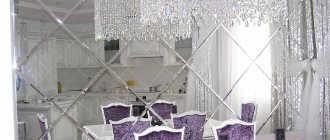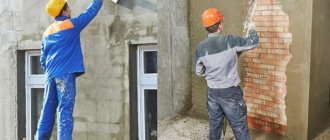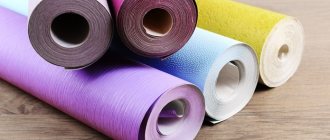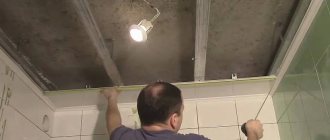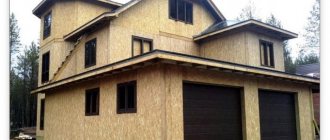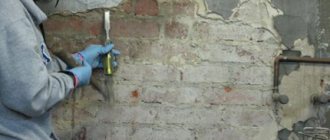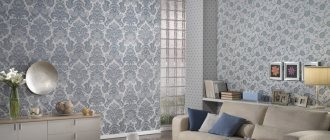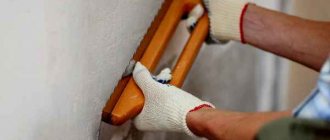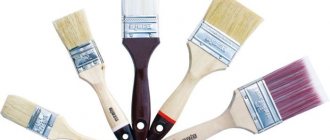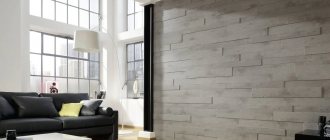Facade panels for plaster
Plastered facades look noble and interesting, but high-quality plaster takes time. When time is of the essence and the budget is limited, facade panels for plaster will help out. Unlike traditional technology using a sand-cement mixture, they do not have some disadvantages. These include labor intensity and the likelihood of cracks appearing during the shrinkage process.
Figure 1. Facade panels for plaster
Plastered panels for exterior finishing
Finishing the facade with panels for plaster helps to avoid risks associated with the human factor. If the finisher's skill leaves much to be desired, the drawing may turn out distorted. In this case, the facade will not look neat. Facade panels reduce such moments to a minimum. Even a non-professional can handle them.
These are the results that modern cellulose-based finishing materials can achieve.
A beautiful combination of beige and brown cladding with rustic stone decorating the corners of the building.
Figure 2. Combination of beige and brown cladding
Stylish architectural accents, which were achieved through the use of light and dark colored panels.
Figure 3. Using panels of light and dark colors
A combination of white and Venetian plaster using panels from the Japanese brand “Torey”.
Figure 4. Combination of white and Venetian plaster
Scope of application of fiber cement panels
The most promising area for using panels based on fiber cement is the cladding of facades (both in new buildings and during major repairs and reconstruction). The cladding is mounted on a specialized system consisting of an aluminum or galvanized steel profile (hinged ventilated facades) and involves the installation of an additional layer of insulation.
Fiber cement facade panels are widely used in cladding private houses
Types of facade panels for plaster
The plaster facade of a house can take on hundreds of different appearances. It all depends on the type of facade slabs chosen. Each material has its own recognizable features. Let's consider the existing types of facade panels.
Fiber cement siding is an affordable composite material that allows you to design the exterior of a building in a given style. It can have the texture of concrete, brick, rock, wooden boards and natural stone.
An alternative to it are thermal panels, which are made of two or three layers. They not only give beauty to the facade, but also additionally insulate it. Depending on the insulation used, thermal panels with polystyrene, mineral wool, and polyurethane foam are distinguished.
Depending on the type of finishing, panels are divided into ceramic slabs, clinker bricks, mosaics, torn stone, natural stone, brick, wood, etc.
Depending on the scope of application, panels are divided into facade and basement. The latter type can be used both locally and for finishing the entire building. Basement siding has increased strength characteristics.
How to properly cut, drill and store fiber cement panels
Before we begin installing fiber cement panels on the facade of a building, we will consider some of the features of working with them - cutting, drilling and storage. Let's start with cutting the panels, which may become necessary when working with corners, slopes and the space under the roof of the cottage.
Step 1. Mark the cutting line for the fiber cement panel. It is laid face down on a flat surface. A soft material is placed under the panel to protect it from scratches.
Preparing the fiber cement panel
Step 2. Prepare the cutting tool. It is best to use a circular saw for this. In this case, a product with a guide rail, automatic feed and dust extraction is used - with the help of these devices, a neat and quick cut of the fiber cement panel is achieved. The circular saw blade should be positioned so that at its lowest point it passes 5 mm below the sheet of finishing material.
Circular saw blade location
Step 3. The circular saw is turned on and the cutting process begins. Its disk runs along the entire length of the fiber cement panel. Then the cut part of the fiber cement panel is separated from the main sheet.
Panel cutting
Prices for the popular range of circular saws
A circular saw
Step 4. The surface near the cut of the fiber cement panel is wiped from dust formed during the cutting process with a dry cloth.
The surface near the cut is wiped with a dry cloth
Drilling fiber cement panels should not cause you any problems. The main thing is to comply with several conditions.
- If possible, use only special drills with the appropriate sharpening angle.
- Do not drill several panels at the same time - only one at a time.
- Preliminary marking is required.
- It is necessary to make indents from the edges of the fiber cement panel. They depend on the specific characteristics of each sheet and should be specified in the instructions or description supplied with the material.
- After completing the drilling process, the panel around the hole must be cleaned of dust on both sides. To do this, use a dry microfiber cloth.
Preliminary marking is required
Drilling process
Every house has utility lines; in some cases they go outside not underground, but above it. In such a situation, it becomes necessary to cut round holes in the fiber cement panels. You can see the process in the photos below.
First, marking is done - a circle of the required diameter is drawn. Then a hole is drilled at its edge
The blade of an electric jigsaw is inserted into this hole, and the tool itself is turned on. The cutting process begins - the jigsaw is slowly moved along the line. Afterwards, the edge is wiped from dust with a dry cloth.
Fiber cement panels should be stored in a dry place and strictly in a horizontal position. It is not advisable to place the slabs on the ends - they will be deformed. Pallets or wooden blocks must be placed under stacks of fiber cement panels.
Rules for carrying fiber cement panels
Video - Installation of Cedral fiber cement siding
Advantages of fiber cement panels for plastering
Fiber cement boards consist of wood fiber, mica, quartz, cement, and inorganic components. Several layers of material are pressed under high pressure and at elevated temperatures in an autoclave. The result is a monolithic material with a homogeneous structure. It has the following advantages:
- Panels for plaster based on wood fiber do not support combustion because they are made from non-combustible components. Can withstand prolonged exposure to high temperatures without any damage.
- Do not contain harmful substances, including asbestos. The main component is cellulose fiber, a natural material. Completely safe for human health and the environment.
- They are a durable facing material. They are not afraid of mechanical damage, including hail, due to the multilayer structure.
- They look beautiful and expensive. You can choose any color - there are no restrictions. Thanks to the variety of color and texture solutions, they help in realizing bold architectural designs.
- They are not afraid of water and dampness, as they are painted with acrylic paint on both sides - outer and inner.
- They can be mounted in different ways (with dowels, glue, or regular nails).
- They are not afraid of frost.
- They serve for an average of 25 years.
Installation of fiber cement panels - step-by-step instructions
Let us present step-by-step instructions that consistently outline the process of installing fiber cement panels on the facade of a house.
Step 1. Installation of fiber cement panels begins with preparing the wall. It is cleaned of remnants of old finishing, dust and dirt. If the house is made of brick or foam blocks, get rid of excess cement mortar between them. Then, using a level and beacons, they determine how smooth the wall is and whether there are any defects on it that need to be taken into account in the future.
The evenness of the wall is determined
Step 2. Markings are applied to the wall for the installation of brackets on which the frame for finishing made of fiber cement panels will be attached. The vertical and horizontal spacing between the brackets is selected based on the project and the material used.
Marking
Step 3. Using the marks made at the previous stage, holes are made for anchor fasteners. Their depth is selected based on the wall material and the weight of the fiber cement panels that will be used for finishing.
Drilling holes
Dimensions of facade panels for plaster
Fiber cement panels are represented on the market by several manufacturers. The surface sizes of each of them are slightly different. Let's look at the dimensions of the slabs of the most famous brands on the market.
Fiber cement boards KMEW
| Series | Texture | Size |
| NT3853GA Neorok | Wild stone | 16Х3030Х455 mm |
| NF5161U Neorok | Burnt brick | 18Х3030Х455 mm |
| F3644JU Neorok | Masonry | 16Х3030Х455 mm |
| RZ5100C Ceradir | Wood | 18Х3030Х455 mm |
| COAT CL4101C Ceradir POWER | Bricklaying | 16Х3030Х455 mm |
| CA12511C Ceradir-akril | Decorative plaster | 14Х3030Х455 mm |
| CA1842WC Ceradir-akril | Decorative plaster | 14Х3030Х910 mm |
Nichiha fiber cement curtain panels
| Series | Texture | Size |
| AE811 | Masonry | 0.035Х0.455Х0.22 mm |
| AY41 | Wild stone | 0.035Х0.455Х0.22 mm |
| EJ58 | Masonry | 0.018Х0.455Х1.818 mm |
| EF86 | Sawed stone | 0.018Х0.455Х1.818 mm |
| EFX135 | Modern | 0.016Х0.455Х3.03 mm |
| EF76 | Wooden lining | 0.016Х0.455Х3.03 mm |
| WDX32 | Natural stone | 0.014Х0.455Х3.03 mm |
Fiber cement boards for A-Stone plaster
| Series | Texture | Size |
| AS–701-704 | Vinyl siding | 15Х615Х3000 mm |
| AS–401-403 | Masonry | 15Х600Х3000 m |
| AS–601-603 | Board | 15Х600Х3000 mm |
| AS–101-103 | Wild stone | 12Х615Х3000 mm |
| AS–301-317 | Brickwork | 12Х615Х3000 mm |
| AS–201-203 | Decorative plaster | 10Х1220Х3000 mm |
Do-it-yourself panel installation
When covering the facade with panels for plaster with your own hands, you need to do the following:
Figure 5. Sequence when cladding the facade with panels for plaster with your own hands
The set of components for installation work is standard and includes pliers, a screwdriver, an angle grinder, and a screwdriver. The frame can be metal or wood. If you choose a tree, take care of its additional protection from destruction.
The frame guides should be installed at a distance not exceeding 60 cm from each other. For fastening slabs up to 14 mm thick, nails or self-tapping screws are most often used. Upon completion of the work, their hats are painted to match the color of the cladding. The plates themselves are applied with a gap of 10 mm. It must be filled with a sealing compound.
If the installation involves slabs with a thickness of 16 mm, clamps are used to achieve reliable fastening. They allow you to get a neat result and ensure that seams and fastenings are not visible.
IMPORTANT: Fiber cement siding is environmentally friendly, but the dust that is generated when cutting it poses a respiratory hazard. In this regard, it is necessary to cut slabs outdoors. When working, be sure to protect your face with a mask and goggles, and your hands with gloves.
Training video on installation of facade panels.
Types and main manufacturers of fiber cement panels
Based on their appearance, fiber cement panels can be divided into the following groups.
- Panels imitating stonework. They are produced in a large number of options - the size and shape of individual “stones”, their color, texture, degree of detail, etc. vary.
- Panels made to look like brick. The main part comes in red and yellow, but there are other options.
Samples of fiber cement panels stylized as stone, brick and plaster
- Siding imitating painted wood.
- Fiber cement boards with an external surface of stone chips. They differ in color, the presence of inclusions of other shades and the size of the fraction.
Fiber cement panels with stone chip finishing
- Panels with a single color color and plaster texture.
- Panels with a single color color and a smooth surface. Such products are most often used not for country cottages, but for offices and multi-storey urban housing.
Fiber cement panels “wood look”
A building finished with fiber cement siding of the Cedral brand, “like wood”
Important! Some of the fiber cement panels are produced unpainted - the home owner must complete this stage of façade finishing independently. On the one hand, this will allow you to choose a color that for some reason you did not find in the manufacturer’s catalog. But at the same time you will need to spend time and effort on applying paint. It is also worth noting that the cost of such unpainted fiber cement panels is 10-20% lower than the fully finished material.
The durability and appearance of fiber cement panels for facades directly depend on who produced them and on what equipment, as well as with what care the manufacturer followed the technological processes. In total, there are eight manufacturers who are considered leaders in this area in the construction market in the CIS. You can familiarize yourself with them from the table below.
Table. Fiber cement panel for facades - main manufacturers and brands.
| Firm | Description |
KMEW | A Japanese company that is one of the pioneers in the production of fiber cement panels. Many years of experience allowed them to bring the technological process and the quality of the manufactured material to the best possible levels. |
NICHIHA | Another manufacturer of fiber cement finishing from Japan. The company pays great attention to the quality of the cement and mineral fillers used. |
LATONIT | A developing manufacturer from Russia. Constantly increasing production speed, expanding model lines of fiber cement boards. The most modern equipment from Europe is used for their production. |
"Minerite" | Finnish manufacturer of fiber cement finishing. It produces slabs in the mid-price segment, very high quality and especially resistant to cold conditions. |
"Rospan" | Large assortment and high quality, ensured by strict monitoring of the technological process and product compliance with basic standards. |
"Kraspan" | The products of this company can be found almost everywhere - there are representatives in dozens of cities throughout the CIS. |
Cembrit | Danish manufacturer, one of the leaders in the production of asbestos-cement boards. Known for its quality, in no way inferior to its Japanese counterparts. |
EQUITONE | This company specializes in fiber cement panels secured with rivets. Most often, these products are used for finishing the facades of public buildings and offices. |
Do-it-yourself installation of facade panels
Not every homeowner has the financial means to decorate their home with stone tiles or decorative bricks. It's not just the cost of materials, but also the complexity and high cost of installation. To insulate and give the house a more aesthetic appearance, there are special facade panels. Read more here.
